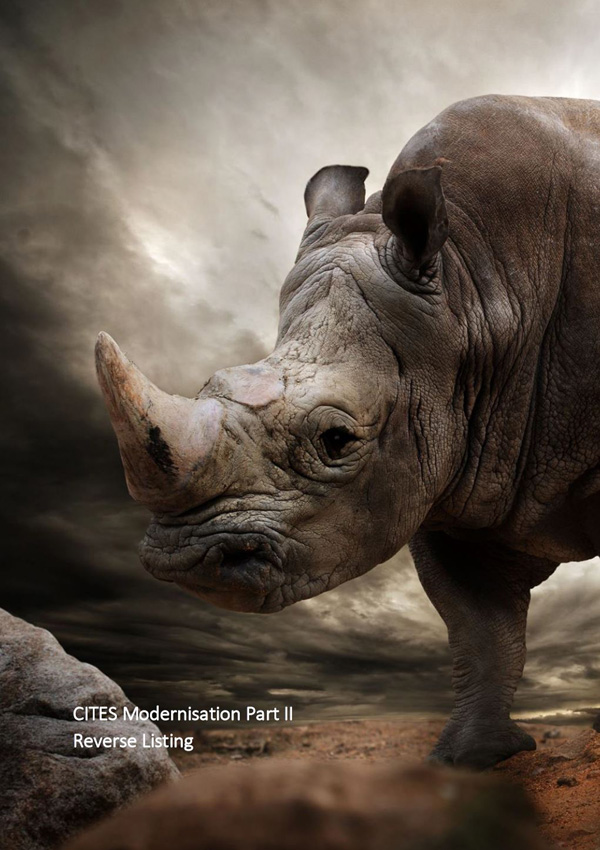
How many reports will be published, talking about the desperate need for more financial support to stop biodiversity loss, which never talk about how to create an ongoing, reliable funding stream?
The problem of ineffective monitoring and regulation of the trade in endangered species has been known for decades. Knowing the problem hasn’t yet led to anything other than piecemeal investments and, as a result, unsustainable over-exploitation for trade remains a major contributor to the extinction crisis. This was highlighted again this month, with an addition to the growing number of papers being written about the legal trade in wildlife; in this recent paper the authors state, “A global understanding of carrying capacity and offtake levels is missing“, and they go on to say “We reveal that where the exploitation for trade occurs, populations decline significantly in abundance.” But, this information shouldn’t be missing for endangered species, this was what CITES was put in place to do in 1975.
Relying on government funding or on philanthropic donations to solve the lack of resources for regulation and monitoring of this trade will not work, it hasn’t worked for 45 years. And, governments have shown little desire to increase funding to adequate levels. If there was a will, funding would follow, for comparison you just have to look to the illegal drug trade. Governments provide US$100 billion annually to police the drug trade, while funding to police the illegal trade in endangered species is miniscule, amounting to US$261 million annually. The value of the illegal drug trade is estimated to be just double that of illegal fishing, logging and wildlife trade, and yet the fight against it receives 400 times more funding!

Report-after-report, meeting-after-meeting, summit-after-summit, networking-group-after-networking-group talk about the scale of the extinction crisis. All this currently amounts to is just meaningless statements and proclamations – there will be no action without significant amounts of money. Unless industry is finally shamed and corralled into contributing to the cost of regulating the trade, by creating a trade levy (or levies) reflecting the urgent need for ensuring sustainability, then intergovernmental organisations and conventions will continue to fail. Trade levies can provide a pragmatic approach to funding that reflects the inequality underlying the trade; namely that biomass extraction takes place in developing countries with no or little ability to contain over-exploitation or illegal extraction and trade. Currently, industry only pays for CITES permits, which are in effect tiny, token amounts, while the legal trade was estimated to be worth US$320 billion annually as long ago as 2009. I can’t begin to imagine the value now, but it is most certainly over US$500 billion annually.
It begs the question, why has this highly profitable industry been allowed to keep its regulator so impoverished? And just how much have businesses and industries lobbied, over the 45 years CITES has been in force, for governments to ease restrictions on this trade and keep the information, they deem as ‘sensitive’ about their use of endangered species, hidden from public scrutiny?
Businesses and industries can afford to pay, particularly if levies are raised at the end of the value chain, at the final manufacturing or retailer stage, or at import. Currently for most CITES signatory countries, the token cost paid for permits is paid on export, which is simply crazy and benefits some of the biggest luxury brands in the world, who are based in importing countries.
The levies introduced should be significant enough to cover the cost of monitoring, data collection, tracking, enforcement (incl. prosecutions) in all countries. Let’s just put this into perspective, CITES currently receives core funding of only US$6.2 million annually, to facilitate and regulate the legal trade in endangered species. Based on the 2009 estimated value of the legal trade, a 1% levy would have provided CITES US$3 billion annually. Not that I am saying the levy should be just 1%.
The levy needs to be set at a level where it provides sufficient funds to all signatory countries to drive a rapid decline of the illegal trade. The additional funding should be used to create a comprehensive system for compliance, monitoring and enforcement, including compliance from business and not just governments.
A major hurdle for putting such a system in place is finding a legal basis for raising such a levy and distributing it fairly. Under the current CITES articles there is no legal basis for raising or collecting the levy. Here again, I find myself asking the question, after all these decades of a trade that has been called one of the most lucrative in the world, why has no action been taken to prepare the ground for a trade levy? At this point, I remind myself that under the current CITES rules, a signatory country isn’t even mandated to have an enforcement authority!
An enforcement authority is optional, and a recent review found that 85 signatory countries do not have an enforcement authority. The review was rightly concerned about the “level of attention given to discovering violations as well as to any resulting arrests, prosecutions, and so forth when violations do take place”. So as key conservation organisations, and personalities, endlessly talk about dealing with wildlife crime, how can they have any credibility when in 45 years they haven’t solved the issue that CITES doesn’t even mandate signatory countries to have an enforcement authority. They have certainly kept that quiet.
Ultimately, saving species from over-exploitation for trade purposes requires changing CITES to a ‘reverse’ or positive-listing model, where industry pays for both application, for the initial listing, and then the ongoing, annual listing fees. Under such a model the default is no trade, and the burden of proof shifts to industry, with all research having to be done upfront to show that trade won’t drive the decline of the wild cohort or the ecosystem it lives in. The process for making applications under a positive listing model is dictated to business, they do not gain power under such a framework, they just have to take responsibility and become accountable. Nature Needs More knows that this may take a few years to do, as it will be difficult to renegotiate the articles of the convention, but it is possible to do this transition within a decade. And, given that the legal trade is driving the extinction crisis, a business-as-usual approach is unacceptable.
For now, we need a new mechanism to raise fees and/or levies that can be created quickly, to provide a reliable and adequate funding stream. From Nature Needs More’s perspective, this involves a two-pronged approach. It starts with creating a global NGO, which acts as an interim registration and certification body for all businesses involved in the trade, and that charges fees. The second step being, all major importing countries, with a minimum of the US, EU, China, Japan and the UK agree to pay levy import duties on CITES listed species, including live animals, plants and derived products, in line with the value of the imports declared at customs.
These duties would be set to apply to all imports from anywhere, to remain compatible with the most favoured nation rule under the WTO. Although by the nature of import duties they will just be added to consolidated revenue, these same countries would also commit to make an annual remittance to, say, the Global Environment Facility, the GEF, equivalent to the value of the duties collected (minus overheads).
Because the GEF includes an existing mechanism to channel funds for biodiversity protection to poor and developing countries, this is the best way of solving the distribution problem. CITES is not set up to distribute funds to signatory countries, but the GEF is, and it can accommodate the new mandate, because such a change can be made by the 39 donor countries who make up its governing council. Under such a change, the GEF can also create guidelines and funding rules for compliance, monitoring, data collection, tracking, enforcement, and would have the ability to use these rules and guidelines to create an effective global system.
So there is a way to create an ongoing, reliable funding stream, even in the current system. This option has been available since 1992, when the GEF was established. After years of inaction, a level of urgency is needed to raise funds from industry, and channel them into proper CITES compliance and enforcement.
Business can no longer get a free ride!



